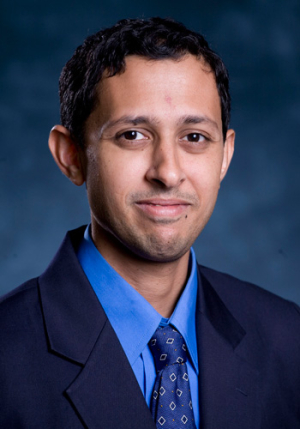A researcher with the UH Cullen College of Engineering has published an article in one of the nation’s foremost scientific journals outlining successful efforts to rapidly identify and characterize immune system cells that fight HIV.
The article by Navin Varadarajan, assistant professor of chemical and biomolecular engineering, is based on research he conducted in collaboration with investigators at the Massachusetts Institute of Technology and the Ragon Institute. It was published in the March 6 issue of the Proceedings of the National Academy of Sciences.
The paper outlines a method of isolating and identifying for further study CD8 T cells that attack a specific virus – in this case, HIV. Biological samples that contain these cells are often small and the plates on which samples are placed are much larger than the cells themselves, making isolating and tracking CD8 T-cells a major obstacle in both research and treatment.
Varadarajan and colleagues have addressed this problem by creating a new tool to isolate cells, the nanowell array. The array is a polymer slide containing tens of thousands of individual chambers, each 125 picoliters – small enough to isolate and study individual cells.
“If we shrink the container small enough so that its dimensions are similar to those of a single cell, we can achieve almost single-cell resolution. So within the same footprint, we can look at lots of cells,” said Varadarajan.
Once individual cells were isolated, Varadarajan and colleagues then exposed the nanowell array to pieces of the HIV virus and identified the cells that were activated by that exposure. At that point, Varadarajan was able to retrieve the HIV-specific CD8 T-cells from the array for cloning.
Using this method, Varadarajan and colleagues were able to establish clone lines of CD8 T-cells taken from a biological sample that had 100- to 1000-fold fewer cells than required by other techniques.
“For various reason, from the nature of the clinical sample to the type of patient, it can be difficult to retrieve enough T-cells to characterize how they are responding to an infection or a therapeutic intervention,” said Varadarajan. “With this method, physicians and researchers will be able to study these T-cells more quickly and easily than before. Ideally, that will lead to better interventions and accelerated research.”
